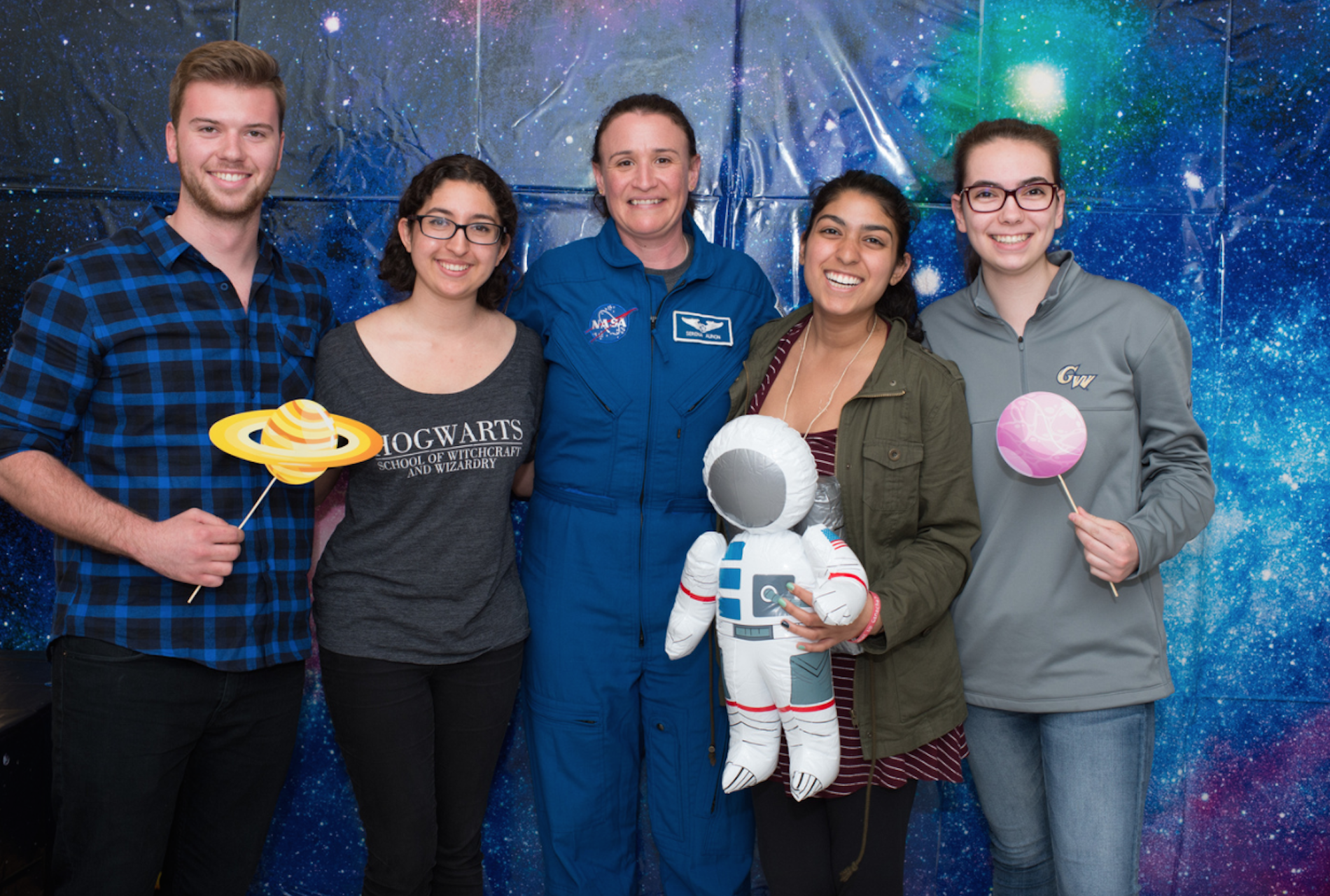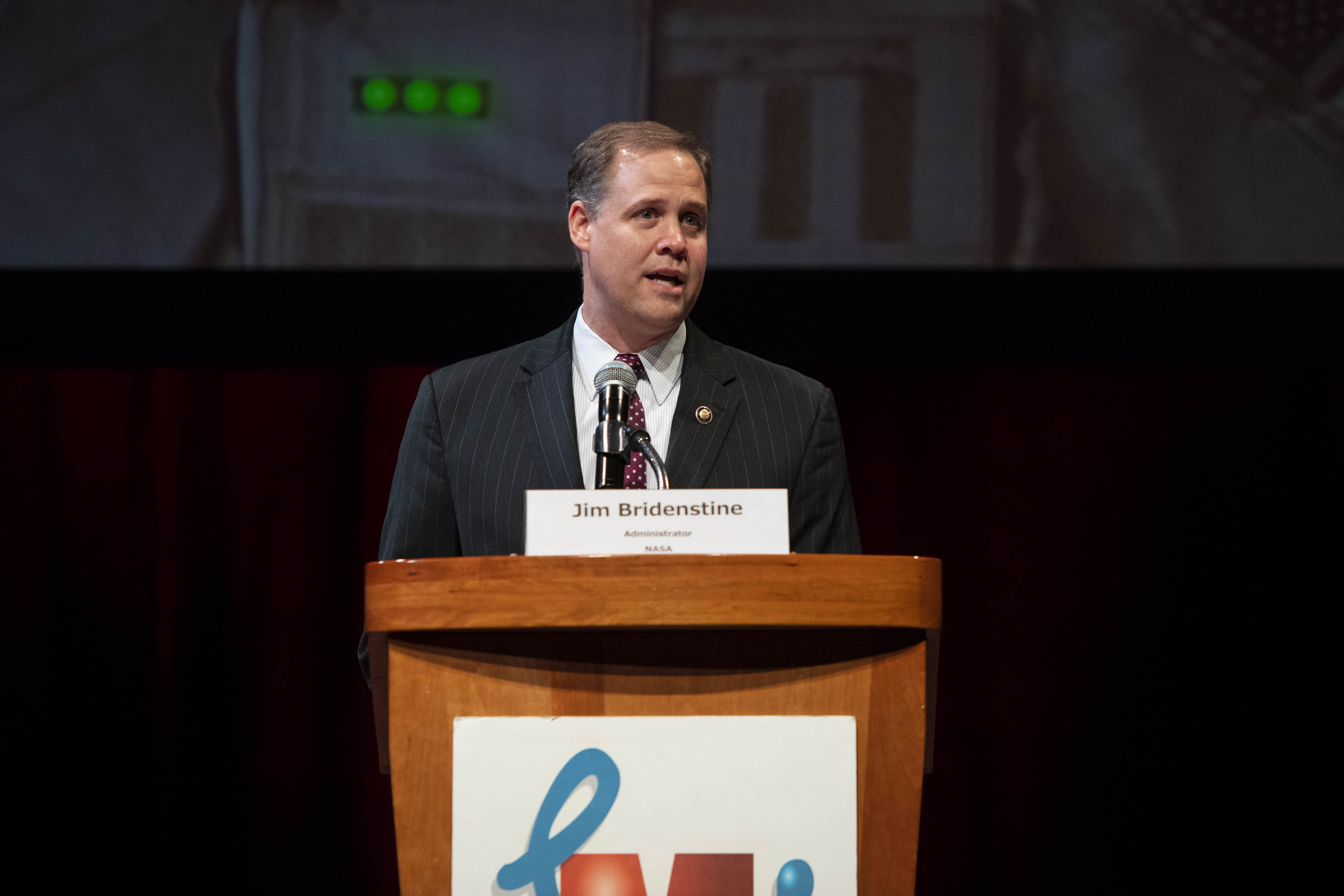By Kristen Mitchell
Astronaut Serena Auñón-Chancellor, B.S. '97, said the first time she sat down for a class about the electrical power station on the International Space Station (ISS), the NASA instructor was concerned that it might not make much sense to her. As a former flight surgeon, this information was outside of her expertise—but as a GW graduate with a bachelor’s degree in electrical engineering, she felt right at home.
“GW is where I got my start,” Dr. Auñón-Chancellor said. “It was during that time that I actually decided to make my transition into the pre-med field. So I was a pre-med engineer during my years there at GW, and they really helped me accomplish my goal of getting to medical school.”
Dr. Auñón-Chancellor, a graduate of the School of Engineering and Applied Science, will launch for the ISS on June 6 along with two other international astronauts. The trio will continue ongoing experiments in biology, biotechnology, physical science and Earth science currently underway and scheduled to take place aboard humankind’s only orbiting laboratory.
To celebrate the launch, SEAS will host a launch morning viewing party in Science and Engineering Hall’s Lehman Auditorium from 7 a.m. to 8:30 a.m. on June 6. The launch is slated for 7:12 a.m. All members of the GW community are invited to join.
Dr. Auñón-Chancellor came to NASA in 2006 as a flight surgeon and served as the deputy lead for medical operations for NASA’s Orion spacecraft before joining the astronaut corps in 2009. She is the second Hispanic woman to become a NASA astronaut, according to NBC Latino.
Young people interested in working for NASA often ask her what academic disciplines the agency wants future astronauts to explore, Dr. Auñón-Chancellor said, but that is the wrong question. Students should instead focus on what they want to do, she said, and follow their passions.
“For some folks, they may think ‘Well if I become a mechanical engineer, maybe NASA has too many mechanical engineers.’ Absolutely not,” she said. “If you want mechanical engineering and you want the research that goes on with that, you do that because NASA picks folks to work on the astronaut corps or engineers because they love what they do, and they’re really good at it.”
Dr. Auñón-Chancellor spoke with GW students about her life as an astronaut when she visited Science and Engineering Hall in April 2017 as part of the annual Frank Howard Distinguished Lecture. She spoke with the GW community about her upcoming mission and posed for photos with NASA fans.
Every day on the ISS is different, Dr. Auñón-Chancellor said. Between twice daily planning conferences with mission control, daily activities could include conducting science experiments, performing maintenance on the space station, testing the water and getting ready for space walks.
“If we have a cargo vehicle that’s come up with supplies, maybe one of our commercial crew vehicles, then we’re preparing the robot arm so that we can go out and grab that cargo vehicle,” she said. “They don’t park themselves on the space station; we’ve got to go get it. So really every day is very, very different.”
Dr. Auñón-Chancellor spoke with GW Today about her upcoming spaceflight while training at the Gagarin Cosmonaut Training Center in Russia. She is scheduled to arrive on the ISS on June 8 and will return to Earth in December.



